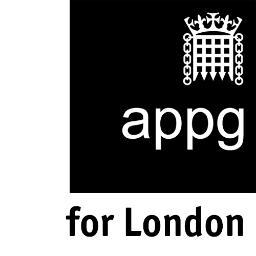In January 2015, Ofcom published a report which looked at ensuring “communications services work in the interests of UK citizens”. This report found that: There is an increasingly compelling argument that speeds of 10Mbit/s are needed to achieve an effective quality of service, especially where there is simultaneous use of the connection by different services or users within the home.
Broadband Delivery UK (BDUK) is responsible for managing the Government’s broadband funding. Individual projects are the responsibility of local authorities and the devolved administrations, as set out in BDUK’s delivery model. Each local authority in England has been allocated funding to help provide 90 per cent of homes and businesses with access to superfast broadband and everyone with access to at least 2 Mbps.
Upload speeds are also crucial. When the Institute of Directors (IoD) polled directors in 2015, 45 per cent said that upload speeds were important to their staff – just 13 per cent behind the importance of download speeds.
However the Nesta ‘European Digital City Index 2015’ found that London ranked just 12th in Europe on the quality of its ‘digital infrastructure,’ 26th for download/upload speeds (25Mb/s) behind Riga (43Mb/s), Sofia (38Mb/s) and Bucharest (80Mb/s) and came 28th for mobile internet.
The IoD 2015 report also says ‘Yet Britain lives a paradox. It has some of the worst broadband speeds in the developed world, some of the least reliable broadband in rural and urban areas alike, and patchy mobile coverage. Our digital economy has grown in spite of, not because of, our digital infrastructure. Our digital infrastructure therefore needs improvement now, but that is not enough. We must attempt to future-proof it for increased demand.’
Data and maps
This UK data from June 2015 is based on BDUK data and included in the House of Commons library briefing paper on broadband of January 2016.
You may also wish to see the following
- Urban area map of slow connections (PDF)
- Constituency-level table of broadband speed and superfast coverage (Excel) Note that there are tabs separating out the criteria and all London constituencies are highlighted.
- Ultrafast Britain Report IoD, February 2016 (PDF)
This data includes some sparsely populated areas in Wales and Scotland and these can help account for the range of statistics in some cases. When referring to speeds the term used in ‘connections’. This does not comprise all households, only the ones that are connected to the internet.
Superfast broadband availability
There are 11 London constituencies in the top 50 Constituencies - with superfast availability of between 98 per cent - 96 per cent, but most of them are in outer London. However, four core central London constituencies, including the Cities of London & Westminster (which ranks at 465 of 650 of the connected constituencies), are only in the 70 per cent availability range. The much discussed Silicon Roundabout and the whole of the central business district suffers from these poor speeds. In context, the availability of superfast broadband ranges, when measured by premises covered, ranges from 98 per cent to 10 per cent across the country.
Ultrafast broadband availability
There are 9 London constituencies in the top 50 Constituencies, ranging as having from 29 per cent – 10 per cent of ultrafast availability, but all of them are in outer London. The Cities of London and Westminster constituency ranks at 131 of 650 with 2 per cent. In context, the availability of ultrafast ranges from 57 per cent to 0 per cent across the country.
Average download speeds
There are nine London constituencies in the top 100 constituencies (having between 42Mb/s – 40Mb/s), but all of them are in outer London. The Cities of London and Westminster is ranked at No.585 of 650 with an average download speed of 17Mb/s. To put this in context, average download speeds across the UK constituencies ranges from 47Mb/s to 6Mb/s.
Percentage of connections in constituencies with less than 2Mb/s
There are 21 London constituencies where only 1 per cent of connections have a speed of less than 2Mb/s. In context, the percentage of connections in UK constituencies that get less than 2Mb/s ranges from 1 per cent to 16 per cent.
Percentage of connections in constituencies with less than 10Mb/s
There are 29 London constituencies where 25 per cent of connections have speeds of less than 10Mb/s. The Cities of London and Westminster has 33 per cent of connections with a speed of less than 6Mb/s. 6 London constituencies have 40 per cent or more of their connections at less than 10Mb/s. To provide context, the percentage of connections in UK constituencies that get less than 10 Mb/s ranges from 15 per cent to 100 per cent.
Percentage of connections in UK constituencies with more than 30Mb/s
There are 5 London constituencies which have over 50 per cent of connections at more than 30Mb/s but all of them are in outer London. At the other end of the scale, 5 London constituencies have fewer than 21 per cent of their connections with a speed of 30Mb/s or more - including the Cities of London and Westminster which is at 638 of 650 with just 8 per cent of connections at more than 30Mb/s. In context, the percentage of connections over 30Mb/s ranges from 59 per cent to 0 per cent across the country.

